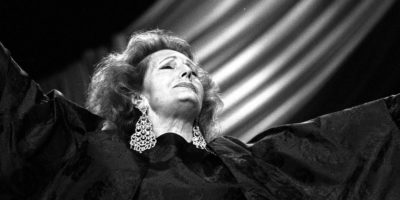Who Invented The Scissors? 10 Things To Know
One item stands out as a symbol of precision and practicality in the world of common tools: scissors. Scissors have crossed time and culture with their graceful yet strong blades to become invaluable companions in our daily lives. These basic yet inventive devices have demonstrated their worth in every aspect of human activity, from elaborate crafts to pragmatic snips.
Scissors have evolved from simple instruments to ergonomic marvels over centuries, illustrating humanity’s unrelenting thirst for invention. We discover a story of craftsmanship, adaptation, and the pure artistry of usefulness as we explore the world of scissors.
Although Leonardo da Vinci is frequently associated with the creation of scissors due to his usage of the tool in canvas cutting, the tool existed long before his time. It has a long history that reflects its importance in everyday life. Da Vinci’s contributions live on as a monument to his diverse genius, even if not in the invention of scissors. 10 things to know about Leonardo da Vinci.
1. He was born out of wedlock

Leonardo Da Vinci and Mona Lisa Smile.jpg Leonardo Da Vinci, Public domain, via Wikimedia Commons
Leonardo da Vinci was born on April 15, 1452, in or around the Tuscan hill town of Vinci, 20 miles from Florence. The traditional account, based on a local oral tradition recorded by the historian Emanuele Repetti, is that Leonardo was born in Anchiano, a country hamlet that would have provided sufficient privacy for the illegitimate birth.
Though it is still possible that he was born in a house in Florence that Ser Piero almost certainly had, the fact remains that he was born out of wedlock to Piero da Vinci. Leonardo’s parents divorced a year after he was born. His mother then married his foster father who brought him up.
2. Leonardo became an apprentice in painting by the age of 17

André Verrochio.jpg Nicolas de Larmessin, Public domain, via Wikimedia Commons
Leonardo’s family relocated to Florence in the mid-1460s, which was the centre of Christian Humanist philosophy and culture at the time. Around the age of 14, he began working as a studio boy in the Florentine painter and sculptor Andrea del Verrocchio’s workshop.
This was about the time of Verrocchio’s mentor, the famous sculptor Donatello’s death. Leonardo was 17 when he became an apprentice and was in training for seven years. Leonardo received theoretical instruction as well as practical training in drafting, chemistry, metallurgy, metalworking, plaster casting, leather making, mechanics, and carpentry, as well as creative training in drawing, painting, sculpting, and modelling.
Read On Top 10 Remarkable Facts about Sandro Botticelli
3. Leonardo collaborated with Verrocchio on The Baptism of Christ painting

His helpers did a lot of the painting in Verrocchio’s workshop. Vasari claims Leonardo worked with Verrocchio on The Baptism of Christ, painting the youthful angel clutching Jesus’ garment.
Close inspection exposes portions of the work that have been painted or touched up over the tempera, including the landscape, the rocks seen through the brown mountain stream, and much of the figure of Jesus, bearing testament to Leonardo’s hand. Verrocchio’s bronze figure of David in the Bargello and the Archangel Raphael in Tobias and the Angel may have been inspired by Leonardo.
4. Leonardo qualified as a master in the Guild of Saint Luke at the age of 20
In early modern Europe, the Guild of Saint Luke was the most prevalent name for a municipal guild for painters and other artists, particularly in the Low Countries. They were called after the patron saint of painters, the Evangelist Luke, who was described by John of Damascus as having painted the Virgin’s image.
Leonardo qualified as a master in the Guild of Saint Luke, the guild of painters and physicians of medicine, by 1472, at the age of 20, but even when his father established him in his own studio, his connection to Verrocchio was such that he continued to cooperate and live with him.
The first known dated work by Leonardo is a 1473 pen-and-ink sketch of the Arno Valley. Vasari claims that the youthful Leonardo was the first to propose making the Arno River accessible between Florence and Pisa.
5. Leonardo was the master of Francesco Melzi

Francesco Melzi 002a.jpg Francesco Melzi, Public domain, via Wikimedia Commons
Francesco Melzi, sometimes known as Francesco de Melzi, was an Italian painter who was born into a Milanese aristocracy family in Lombardy. He became Leonardo da Vinci’s student and remained his closest professional helper throughout his career. After da Vinci’s death, he became the literary executor of all of da Vinci’s writings, converting them into a manuscript on painting, Tratatto della Pittura, or a collection, Codex Urbinas.
In 1506, the temporary French ruler of Milan, Charles II d’Amboise, called Leonardo to the city. There, Leonardo took on another student, Count Francesco Melzi, the son of a Lombard aristocracy and widely regarded as his favourite.
Read On Top 7 Interesting Facts About Leonardo Da Vinci
6. He was commissioned to paint the Virgin of the Rocks

Leonardo da Vinci Virgin of the Rocks (National Gallery London).jpg Leonardo da Vinci and workshop, Public domain, via Wikimedia Commons
Most art historians believe the Virgin of the Rocks at the Louvre is the older of the two, dating from roughly 1483-1486. The piece was created solely by Leonardo, according to the majority of sources. It stands around 8 cm (3 in) taller than the London model. This painting was first documented in 1625 when it was in the French royal collection. It is widely assumed that this artwork was created to satisfy a 1483 contract in Milan.
The Confraternity of the Immaculate Conception commissioned Leonardo da Vinci to paint the Virgin of the Rocks. His outstanding creative abilities, mastery of light and shadow, and ability to portray tremendous emotional depth made him the obvious option for such an important holy artwork, demonstrating his unrivalled creativity and vision.
7. Leornado was friends with mathematician Luca Pacioli

Luca Pacioli (Gemaelde).jpeg Attributed to Jacopo de’ Barbari, Public domain, via Wikimedia Commons
Fra. Luca Bartolomeo de Pacioli was an Italian mathematician, Franciscan friar, Leonardo da Vinci associate, and early pioneer of the subject of accounting. He is known as the “Father of Accounting and Bookkeeping,” and he was the first person on the continent to produce a treatise on the double-entry system of bookkeeping. He was also known as Luca di Borgo, after his birthplace in Tuscany, Borgo Sansepolcro.
Several of his works were plagiarized from Piero della Francesca in what has been described as “probably the first full-fledged case of plagiarism in the history of mathematics.”
Read On Top 5 Ingenious Leonardo Da Vinci Inventions
8. Leonardo worked as a military architect and engineer for Vernice in 1500
When France deposed Ludovico Sforza in 1500, Leonardo left Milan for Venice with his aide Sala and friend, the mathematician Luca Pacioli. Leonardo da Vinci began working as a military architect and engineer for the city of Venice (Vernice). Venice sought his talents to bolster their fortifications and negotiate the complicated technical issues of the period, recognizing his unique ideas and strategic thinking.
This collaboration exemplifies Leonardo’s flexibility, ranging from aesthetic genius to practical problem-solving, making an enduring imprint not just in the world of art but also in engineering and military strategy.
9. He died at the age of 67
Leonardo died on May 2, 1519, at the age of 67, in Clos Lucé, presumably from a stroke. Sixty beggars bearing tapers followed Leonardo’s coffin in line with his wishes. Melzi was Leonardo’s primary heir and executor, gaining not just money but also his paintings, tools, library, and personal possessions.
Sala, Leonardo’s other long-term student and companion, and his servant Baptista de Vilanis acquired half of Leonardo’s vineyards. His brothers were given property, and his maid was given a fur-lined coat. Leonardo’s ashes were placed in the Collegiate Church of Saint Florentin at the Château d’Amboise on August 12, 1519.
Read On Everything You Need To Know About Leonardo Da Vinci’s Death
10. Leonardo’s studies in science and engineering were impressive and innovative
The sciences and the arts were not mutually incompatible poles in Renaissance humanism, and Leonardo’s studies in science and engineering are sometimes regarded as stunning and original as his artistic work. These investigations were documented in 13,000 pages of notes and drawings that combined art and natural philosophy.
They were created and updated on a daily basis throughout Leonardo’s life and travels, as he observed the world around him. Leonardo’s notes and sketches reveal a wide range of interests and preoccupations, from lists of foodstuffs and persons who owed him money to ideas for wings and shoes for walking on water.
Leonardo da Vinci’s legacy endures as a light of brilliance across millennia. His unquenchable curiosity, game-changing innovations, and visionary craftsmanship have all left an everlasting influence on human history. Da Vinci’s legacy stimulates creativity and reminds us that genuine brilliance resides in the unlimited investigation of both imagination and reality, from the enigmatic grin of the Mona Lisa to sophisticated inventions ahead of their time.
Planning a trip to Paris ? Get ready !
These are Amazon’s best-selling travel products that you may need for coming to Paris.
Bookstore
- The best travel book : Rick Steves – Paris 2023 – Learn more here
- Fodor’s Paris 2024 – Learn more here
Travel Gear
- Venture Pal Lightweight Backpack – Learn more here
- Samsonite Winfield 2 28″ Luggage – Learn more here
- Swig Savvy’s Stainless Steel Insulated Water Bottle – Learn more here
Check Amazon’s best-seller list for the most popular travel accessories. We sometimes read this list just to find out what new travel products people are buying.










